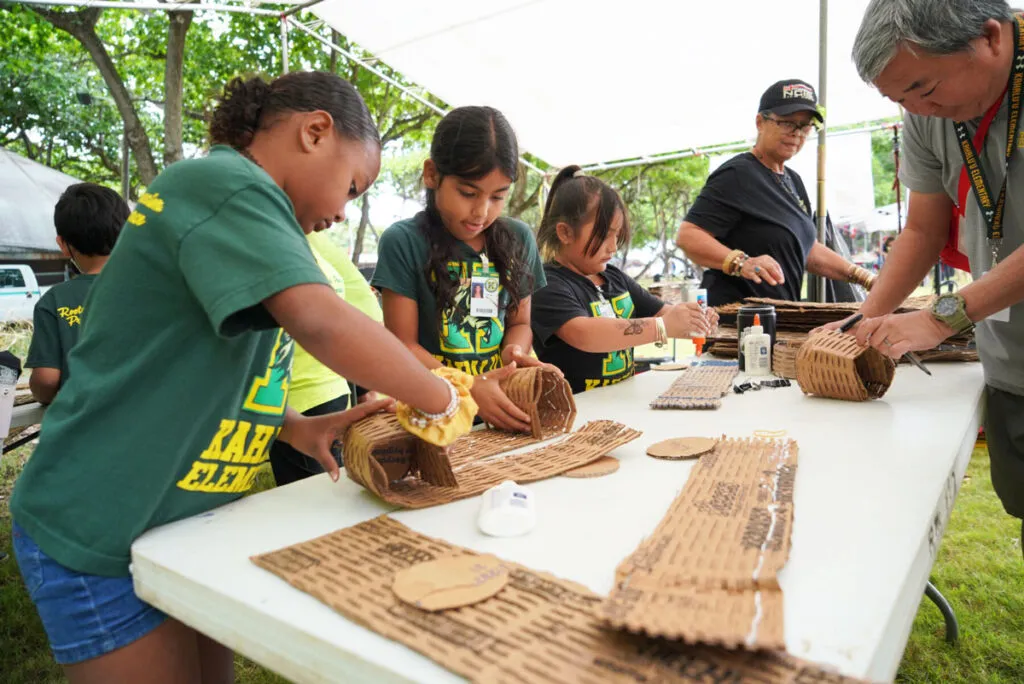Hawaii, renowned not only for its stunning landscapes, is also a place that preserves unique indigenous cultural values. One of the best ways to explore and deeply connect with Hawaiian culture is by immersing yourself in the traditional stories passed down through generations. Join “Travel Around the World” as we explore these special experiences and learn more about the history, customs, and Aloha spirit of the Hawaiian people.
Since 1987, the state of Hawaii has implemented special policies to preserve and promote Hawaiian culture and language. The Hawaiian Studies Program and the Hawaiian Language Immersion Program (Ka Papahana Kaiapuni Hawaiʻi) were established to foster the learning and practice of traditional cultural values.
Discovering Hawaiian Culture Through Storytelling
The Importance of Storytelling in Hawaiian Culture
In Hawaiian culture, storytelling (Moʻolelo) is not just a form of entertainment but also a means of transmitting knowledge, history, and moral values. These stories are often told by elders (Kūpuna), who hold the community’s wealth of knowledge and life experiences.
Types of Traditional Storytelling
There are many different types of storytelling in Hawaiian culture, each with its own meaning and purpose:
- Moʻolelo: Historical accounts, legends about gods, heroes, and significant past events.
- ʻŌlelo Noʻeau: Proverbs and sayings containing profound lessons about life, ethics, and the relationship between humans and nature.
- Mele: Songs and chants telling stories of love, war, or praising the beauty of nature.
Experience Storytelling at Cultural Centers
Today, visitors can experience traditional Hawaiian storytelling at various cultural centers across the islands. These centers often host performances, workshops, and classes where visitors can meet native storytellers and listen to captivating stories about Hawaii’s history, culture, and traditions.
One of the most famous locations is the Polynesian Cultural Center on Oahu. Here, visitors can explore the cultures of six different Polynesian islands, including Hawaii, Samoa, Fiji, Tonga, Tahiti, and Aotearoa (New Zealand). Performances, interactive activities, and traditional foods offer visitors a comprehensive insight into Polynesian culture.

Learn About Hawaiian Cultural Education Programs
The Hawaiian Studies Program is a K-12 initiative providing curriculum support and resources for teaching and learning Hawaiian culture, history, and language. Established in 1980, the program fulfills the 1978 State Constitutional Amendment mandate requiring the state to promote the study of Hawaiian culture, history, and language.
The Hawaiian Language Immersion Program, Ka Papahana Kaiapuni, offers instruction exclusively through the medium of the Hawaiian language until Grade 5, after which English is formally introduced. All families residing in Hawaiʻi can enroll their children in the Hawaiian language immersion program.
Core Cultural Values Conveyed Through Stories
Ka Mālama ʻĀina: Love and Respect for Nature
Traditional Hawaiian stories often emphasize the importance of protecting and respecting nature. Ka Mālama ʻĀina, meaning “caring for the land,” is a core value in Hawaiian culture. Hawaiians believe that humans and nature are intrinsically connected, and protecting the environment is everyone’s responsibility.
Ka Pilina: Unity and Connection
Ka Pilina, meaning “relationship,” is another significant value in Hawaiian culture. Hawaiians value unity, cooperation, and the connection among community members. Traditional stories often tell of heroes who overcame challenges with the help of friends and family.
Ke Aloha: Love and Compassion
Ke Aloha, meaning “love,” is one of the most important values in Hawaiian culture. Hawaiians believe that love, compassion, and kindness are essential qualities for building a peaceful and happy society. The Aloha spirit is demonstrated in how Hawaiians welcome visitors, share food, and help those in need.
Conclusion
Experiencing traditional Hawaiian storytelling is a wonderful way to explore and deeply appreciate the unique indigenous culture of this paradise island. Through captivating stories, visitors can gain a deeper understanding of the history, customs, and core values of the Hawaiian people. Take the time to listen to these stories and feel the Aloha spirit; you will have a more memorable and meaningful trip than ever before.